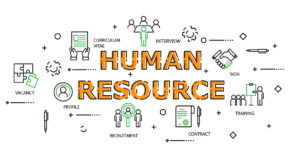Contingent Workforce Trends in 2025: Navigating the Future of Work The nature of work continues to evolve rapidly, and 2025 promises to be a pivotal year for the contingent workforce. As businesses face ongoing economic uncertainty, technological disruption, and shifts in worker expectations, the reliance on non-traditional labor models — including freelancers, independent contractors, gig workers, and temporary staff — is expected to grow significantly. The contingent workforce is no longer just a supplement to full-time employment; it has become a strategic cornerstone for many organizations aiming to maintain agility and competitiveness. Here’s a detailed look at the key trends shaping the contingent workforce landscape in 2025: 1. Growing Share of the Workforce The contingent workforce is projected to make up over 40% of the total global workforce by 2025. Organizations are increasingly adopting flexible staffing models to scale operations quickly, respond to market demands,… [Read More]
The Power of Contingency Recruiting: Meeting Talent Needs
Introduction In today’s rapidly evolving business landscape, the success of any company is heavily reliant on its ability to attract and retain top-tier talent. This pursuit has led many companies to explore alternative methods of recruitment, with contingency recruiting emerging as a popular and effective solution. In this blog post, we will delve into the concept of contingency recruiting, its advantages, and why companies are increasingly turning to this approach to fulfill their talent needs. What is Contingency Recruiting? Contingency recruiting is a recruitment strategy in which a company engages external recruiters to identify and present suitable candidates for open positions. Unlike traditional recruiting, where a company pays a fee only upon the successful hiring of a candidate, contingency recruiting agencies are only compensated when a hired candidate is placed. This payment is typically a percentage of the candidate’s first-year salary. Advantages of Contingency Recruiting… [Read More]
Migrating Workers: How Employer of Record Services Make Hiring Easier
The coronavirus pandemic has shifted the way workplaces across the globe operate. Due to the need for social distancing and constant sanitation, many employers have encouraged or required their employees to work from home. The shift has also made its way into the job interview and hiring process creating opportunities for migrating workers with zoom meetings becoming the normal operating procedure for narrowing down the candidate pool. In fact, 62% of employed Americans currently say they have worked from home during the COVID-19 outbreak. The allure and flexibility of working from home have contributed to many individuals migrating from their home state to a different state altogether. If location no longer matters, why pay California rent prices when you can pay Idaho prices? While an employee moving between towns isn’t a major cause for concern, moving between states can leave business leaders and human resources… [Read More]
Co-employment & Risk Mitigation From Joint Employment
In today’s ever-changing business environment, many companies are looking to reduce the time and money spent on recruiting, hiring, and payroll by utilizing outside agencies in a co-employment agreement. Based on data from SHRM, it takes companies 36 days on average to fill a new position at an average cost of $4,425. Co-employment arrangements allow busy businesses to focus on providing co-employees’ duties, day-to-day schedules, and expectations while the Recruiting Agency handles personnel matters such as onboarding, payroll, sick leave, and benefits. This hybrid form of employment means that the contract employee is technically working for both parties, the business, and the recruiting agency at the same time. Contractors and gig workers are becoming a vital and growing force to be reckoned with in the business world so it is important for businesses to be aware of the benefits, as well as the risks associated… [Read More]
AB5 Changed How You Classify Contractors and Employees
California’s Assembly Bill 5, better known as AB5, went into effect on January 1, 2020 and has drastically changed how employers can classify employees vs. contractors. Now, the state’s Supreme Court “ABC test” is the gold standard for determining if a person qualifies as an independent contractor while abiding by the California Labor Code, Industrial Welfare Commission Wage Orders, and California Unemployment Insurance Code. Has your classification system passed the ABC test? If you haven’t taken a close look at how you’re classifying contractors vs. employees, you’re putting yourself and your company at a big risk—especially now that AB5 is in effect. When an employee is misclassified, employers could be found in violation of requisite unpaid overtime, and might even be failing to follow minimum wage laws and regulations. Steep consequences can follow including high penalties, lawyer fees, and in some cases criminal liability. Misclassification… [Read More]
Here’s What HR Outsourcing Does for Your Business
Did you know that 99 percent of businesses in the US are considered small businesses? In fact, 88 percent of businesses have less than 20 employees. Unsurprisingly, most small businesses do not have an HR department or an HR outsourcing partner. Most don’t even have a single human resources representative, and with good reason. You don’t “need” an in-house, full-time HR expert or department in many businesses. But that doesn’t mean you wouldn’t greatly benefit from having an outsourced HR partner—and maybe even a contingent workforce management partner. First, let’s take a look at the HR facet of such a partnership. A contingent workforce management partner is like having an in-house HR professional team, except you enjoy all of the perks of HR without any of the downsides. What exactly do HR departments do, anyway? It can vary based on your business, but in general,… [Read More]
Why Companies Should Consider Remote Internships In 2021
Every summer, college, and graduate students participate in summer internships in various American companies. Internships allow students to gain invaluable hands-on work experience while providing companies with young and eager workers passionate about their industry. This is a mutually beneficial arrangement, and often, companies will hire their interns for permanent positions once they graduate from school, making internships an excellent pipeline for hiring new talent. Unfortunately, as the COVID-19 pandemic rages on, many companies’ offices are closed, with most of their workforce working from home. This leaves organizations in an unusual position to cut down on their internship, hire drastically, or cancel their internship programs altogether. If this “new normal” has shown us anything, though, it’s that businesses can run efficiently and effectively with virtual employees. Given the success of the work from home model for full-time employees, remote internships can be just as successful. … [Read More]
Why the future workforce will work from home
The work from home trend is not a new concept. Workers have been working from home from the dawn of civilization, but speaking strictly in the modern era, let’s take the past 40 years this trend has increased year after year. In 1979, with the OPEC oil embargo in its sixth year, the Washington Post published the article, “Working at Home Can Save Gasoline,” which suggests telecommuting could have eased the gas crisis. This article urged companies to introduce telecommuting to conserve gas. As you can imagine, employers were opposed to this idea initially. They used argument such as: How can you tell that the workers are doing any work at all from the comfort of their homes? Or, workers are missing out on crucial interactions with their team. But the counterarguments must have been strong enough to help support this trend as it keeps… [Read More]
Why outsource your contingent workforce management
The contingent workforce has been consolidated in the last few years and is here to stay for the foreseeable future. Companies utilize this sector of the workforce for all sorts of purposes from project base assignments to fulfill skill shortages & absences. The question arises, does your organization’s HR department has the bandwidth to identify, vet, and onboard contingent workers without disturbing their daily operations and without taking them away from your companies full-time employees. The answer to that question is, well it depends. Today’s contingent workforce is vastly different than it used to be. These workers are highly trained, specialized, and in-demand professionals. Moreover, they expect to be treated as such. Making sure the procurement process goes smoothly, guarantees employee satisfaction and retention. Identifying the right contingent worker: According to the Society for Human Resources Management (SHRM) it takes approximately 36 days to fill… [Read More]
The Benefits of Having an Internship Program
The concept of internship historically originates from an apprenticeship, the idea of training or preparing personnel for future employment. We typically associate internships with college students, but they can be older workers in pursuit of a new career. Internships are viewed as a vehicle to learn a new skill, gain and improve their knowledge and abilities with the end goal of gaining future employment in a particular field. These programs are mutually beneficial to both interns and employers. Interns can take advantage of in-person training and network opportunities the employer presents. Employers benefit by obtaining relatively inexpensive labor and by tapping into a pool of talent for future potential employment. Not to mention that by offering internship programs employers improve their brand recognition and status in the communities they operate. In a nutshell, internship programs are a win-win arrangement for both interns and employers…. [Read More]










